BPSC TGT SST (History & Geography) Mock Test - 1 - Bihar PGT/TGT/PRT MCQ
30 Questions MCQ Test - BPSC TGT SST (History & Geography) Mock Test - 1
Select the correct option in order to complete the analogy.
Sculptor : Statue :: Poet : ?
Direction: Identify the type of tense of the given sentences.
Q. The boy broke the cup.
| 1 Crore+ students have signed up on EduRev. Have you? Download the App |
वाग्घरि' का सही संधि-विच्छेद है -
निम्नलिखित प्रश्न में, चार विकल्पों में से, उस विकल्प का चयन करें जो दिए गए शब्द के लिए सही द्विगु समास के विग्रह का विकल्प हो ।
पंचसिंधु
If x% of y% of 125 is the same as 5% of 900, what is the product of x and y?
What is the average of first 5 positive prime numbers?
Six persons – Veer, Prakash, Bhola, Shiv, Ankur and Bhanu were sitting around a circular table facing towards the centre. Who was sitting to the immediate right of Bhanu?
Statement I: Ankur was sitting second to the right of Veer, who was sitting to the immediate left of Bhola. Prakash was sitting second to the left of Bhola.
Statement II: Shiv was sitting to the immediate right of Ankur, who was sitting second to the right of Veer. Prakash was sitting second to the left of Bhola, who is to the immediate left of Ankur.
Pointing to a man in a photograph a woman said, “His brother’s father is the only son of my grandfather. How is the woman related to the man in the photograph?
The first, second and fourth terms of a proportion are 16, 24 and 54 respectively. Then the third term is:
Ramu walks 15m towards the north then turns left and covers 20m then covers also 30m by turning south then again turns left and covers 15m. What is the total distance covered by him?
A man standing on the terrace of a building watches a car speeding towards him. If at that particular instant the car is 200 m away from the building makes an angle of depression of 60° with the man’s eye and after 8 seconds the angle of depression is 30°, what is the speed of the car?
In the given, AB || CD. Then X is equal to:
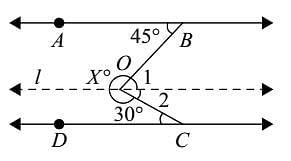
The sea-borne trade is proved by the discovery of an ancient dockyard, connected through the Bhogavar river with the Gulf of Cambay was at:
Which one of the following Chera kings is the brother of Ilango, the author of the Sangam epic ‘Silappadikaram’?
Which choice gives the correct historical order of the following Rashtrakuta kings?
I. Krishna III
II Indra III
III. Amoghavarsa-I
IV Dhruva
V. Krishna-I
VI Dantidurga
The feudatories during 800-1200 A.D. had a number of minor obligations and privileges but one of them is the most revealing which one is that?
Why is steel called the backbone of modern industries?
Which of the following water bodies surround the Indian peninsula?
A rough drawing showing only some features of an area drawn without using any scale
The symbols used to represents various features on the map called
_____ represents the curved surface areas of the whole world on a flat sheet of paper
The 0 degree Meridian is also known as


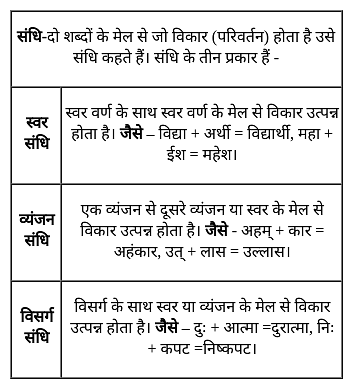
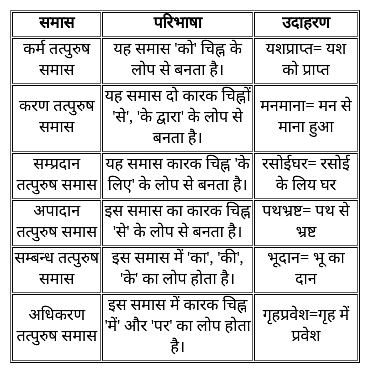

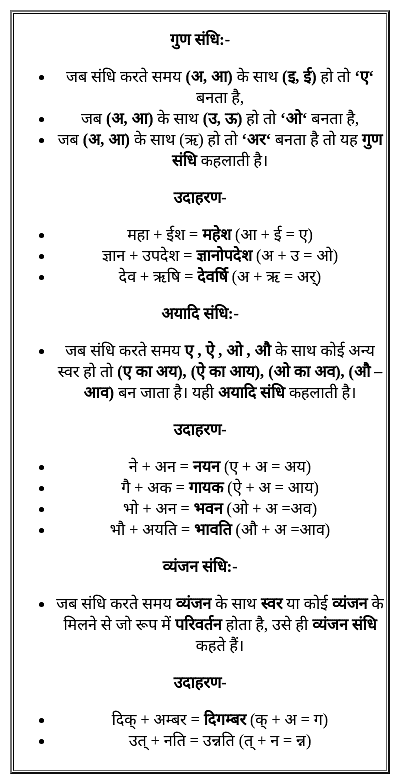



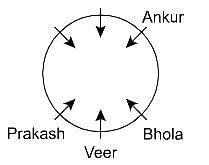
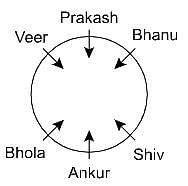
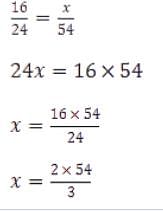


 CD = BD – BC = 200 – 66.67 = 133.33 m
CD = BD – BC = 200 – 66.67 = 133.33 m Speed = 133.33/8 = 16.67 m/s
Speed = 133.33/8 = 16.67 m/s














